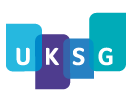The UX proposition
The application of user experience (UX) in libraries seems to have become really popular in recent years. More and more examples of UX library projects that have resulted in service developments and improvements, or which have had a positive impact on student experience, appear to be surfacing. But what is the reason for this seemingly rapid rise in uptake?
In their book User Experience in Libraries Priestner and Borg discuss some of the reasons why UX has recently become popular as a research method, and suggest that it is in part a response to the fact that the traditional quantitative metrics and measures used by libraries (e.g. statistics on footfall, holdings, loans, renewals, database use, downloads, views, social media followers, etc.) do not reveal anything about the success or quality of the interaction experienced by the library user and ultimately the value or impact that this has on the user. They suggest that the focus in UK higher education (HE) on ‘student experience’ has led library managers and administrators to look at how and why library users use libraries in the way that they do (as opposed to the ways in which librarians think that they use them) in order to better understand what users want from libraries.
Ethnography and anthropology
UX in libraries involves a suite of techniques based around first understanding and then improving the experience that users have when using libraries. One of the fundamental principles of UX is that it uses ethnographic methods to achieve this. Ethnography in libraries in itself is not particularly new and there exists a wealth of excellent and interesting case studies, largely from the US, of highly successful applications of ethnographic and anthropological library studies. Particular projects of note include those by Foster and Gibbons, Suarez, Delcore, White, and Duke and Asher. In all instances ethnographic techniques are used to observe and then further inform potential developments in many aspects of library and information services and activity (e.g. collection management, resource discovery, information-seeking behaviour, library instruction, space planning, etc.).
In a library and information setting, ethnography provides ‘a way of studying cultures through observation, participation and other qualitative techniques with a view to better understanding the subject’s point of view and experience of the world’. UX in libraries effectively makes use of these ethnographic approaches in order to see how library users actually use the resources, services and spaces provided by the library, which in turn can contribute to service improvement and development. UX goes beyond the quantitative measures with a view to obtaining a more illuminating and complex picture of user behaviour and user need.
UX tools
Examples of UX methods include:
- observation of user movement in the library (to see where users naturally physically travel to within their library spaces as opposed to where the librarians think they travel to)
- observation of activity within given spaces (to see how users naturally behave in demarked spaces and environments)
- walking through library spaces with users to observe and discuss how they use the library
- focused discussion with library users about what works for them and what does not
- diaries and reflective exercises about users’ experience of the library
- observation of alternative library- or service-oriented spaces
- directed storytelling
- unstructured interviews
- photo studies
- cognitive mapping.
By researching through using one or more of these methods, library managers are able to generate significant and large quantities of data which then need to be effectively collected and analysed, but essentially there needs to be a coding process and the adoption of a critical standpoint. It is important not to lose sight of the fact that the aim of UX is to look at the service wholly from a user perspective (as opposed to a financial or political perspective).
UX and the design of library spaces
Traditionally, the library space (design, layout, access, practicality of use, etc.) was not really considered when addressing performance. The focus was rather more on the quantitative and statistical measures mentioned earlier, and the exploration of user behaviours within library spaces was not regarded as being part of any such measures. In academic libraries, with ‘student experience’ now being all-important, this is no longer the case and, due to its ethnographic nature, UX is very well placed to address this. UX is therefore being increasingly used to inform the ‘design’ of library services with the user at the heart of the decision-making and the intended outcome being to improve the quality of the library for the benefit of the user, through improved design.
‘Design suggests an intentional attempt to create, and the expression of some type of vision, rather than an arbitrary or unintentional occurrence.’
With this in mind, the notion of design is a key one within UX. The delivery of high-quality, high-performing library services is the aim of every library manager, and effective services need to be designed. Librarians are quite often unknowingly involved in design, in as much as every operational management decision (e.g. about loan periods, where to house a collection, how to create access to a collection, introducing new services, etc.) is a decision about the design of the library service. What UX does is ensure that the users’ behaviour patterns, use and expectation of the library service are behind any such decisions.
UX and digital resources
UX can extend to every touchpoint which the library creates where the user or community connects with the library’s human or material resources, both physically or virtually. UX starts with the most basic of elements, the core values of the library service. This point assumes that most (if not all) libraries share common values about equitable access to quality resources and ensuring that users of the library have a highly positive experience.
Ironically, until its recent resurgence, UX was carried out by libraries, but largely applied by libraries just to the design and usability of websites and systems interfaces. This practice was not necessarily referred to as ‘UX’ and often badged as ‘usability testing’. Perhaps, back in the days when library technology and digital resources were regarded as ‘new’, librarians felt a need to measure the quality of these new services in a different way, hence the focus on usability. It is interesting that it has taken until the recent ‘UX revolution’ to apply usability to the rest of the library offer. However, as we have now established, UX is indeed all about the quality and performance of service design (of both physical and digital libraries) and presents its own toolkit of qualitative methods for doing this, including the notion of usability testing.
In an anthropological study looking at HE students’ post-digital learning landscapes, Donna Lanclos suggests that ‘digital’ now permeates all of our learning and that it is ‘just understood’ by those who use it and when we ask library users to think about what they do with technology or how they use the web they are often intrigued and find it difficult to disentangle this from their everyday learning practices.
Systems usability is now accepted into the suite of UX tools that libraries use and often digital spaces are looked at alongside physical spaces, with the improvement of one space often interlinked with the improvement of another. A large-scale UX project, using many UX tools, was carried out at the University of North Carolina and is an excellent example of simultaneously approaching the user experiences of both the physical and digital library, whilst work undertaken at the University of the Arts London illustrates how UX techniques were applied in the actual procurement and subsequent interface developments of a new library discovery system.
Final thoughts
Whether investigating the use of the physical or the digital library, through placing the user at the heart of the method, UX harnesses the concept of the library user as the customer and really focuses on the quality of their experience. UX seeks to identify how the library has a positive impact on the user by finding out exactly how the user interacts and uses the library’s services, facilities and resources. UX is proving to be an invaluable method in providing deep insights into what the user values about the library and similarly what they do not, which can only be a good thing in an environment in which the customer is key, engagement is essential and continual improvement is the norm.



